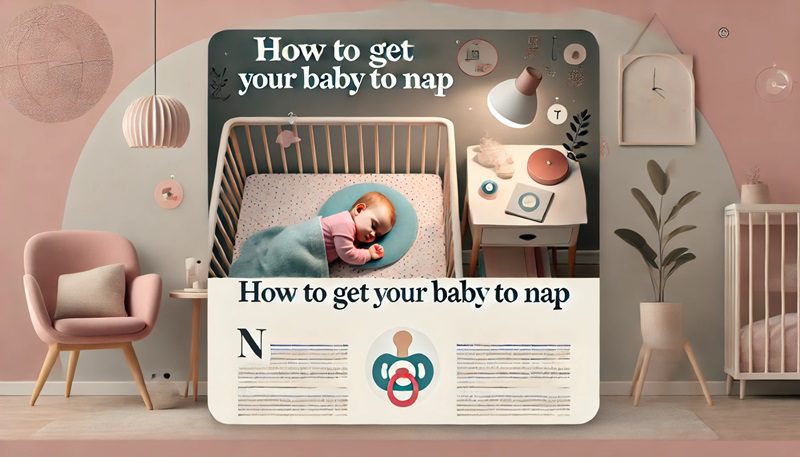Table of Contents
Get Baby to Nap
One of the greatest challenges for parents is figuring out how to get your baby to nap consistently. Babies need naps for their growth and development, but ensuring they take them regularly can be tough. In this guide, we’ll explore strategies to help your little one nap peacefully, offering you a much-needed break. Along the way, we’ll recommend essential products from [your store] that can make the naptime routine smoother and more effective.
Getting your baby to nap consistently can be challenging, especially when dealing with fluctuating sleep patterns. According to Mayo Clinic’s expert guide on infant sleep patterns, establishing a consistent nap schedule is critical for a baby’s overall well-being. Understanding the best sleep environment and routine can make all the difference in ensuring a peaceful nap time. Learning about infant sleep guidelines can provide parents with valuable insights and help improve their child’s nap quality.
Create a Comfortable Sleep Environment

The first step to helping your baby nap is creating a calm, peaceful environment. Babies respond well to settings that are quiet, dark, and cool. A dedicated sleep space is ideal, and having a few essential items will make all the difference.
For instance, using a Baby White Noise Machine can help mask any outside sounds that might wake your baby. Another must-have is our Blackout Curtains, which block out sunlight and ensure your baby can nap during the day without disturbance.
Make sure your baby’s crib is comfortable and safe. Our Organic Cotton Crib Sheets are breathable and soft, providing a cozy spot for your little one to rest.
Establish a Naptime Routine
Babies thrive on routine, and having a consistent pre-nap routine will signal to your baby that it’s time to sleep. Whether it’s a quiet book, a lullaby, or a simple diaper change, keep the routine calm and repetitive.
This predictability helps with how to get your baby to nap consistently, as it prepares them mentally and physically for sleep. You can also incorporate a soothing sleep aid, like our Plush Toy, to gently ease your baby into relaxation.
Watch for Sleep Cues
Understanding your baby’s sleep cues is essential for ensuring they fall asleep before becoming overtired. Common cues include yawning, rubbing their eyes, or becoming fussy. By responding quickly to these signs, you’ll increase the likelihood of a smooth transition to naptime.
If you’re unsure when to put your baby down for a nap, try paying close attention to how long they’ve been awake. Babies have different wake windows depending on their age, and putting them to sleep within this window will help with how to get your baby to nap consistently.
6 Pro Tips for How to Get Baby to Nap Longer

Once you’ve mastered the art of getting your baby to nap, the next challenge is ensuring they nap for longer stretches. Short naps can leave both you and your baby feeling tired, but these 6 pro tips for how to get baby to nap longer can help:
- Ensure a dark room: The darker the room, the easier it is for your baby to stay asleep. Our Blackout Curtains are designed to eliminate light and encourage longer naps.
- Use white noise: A white noise machine like our Baby White Noise Machine can create a consistent, soothing sound environment, blocking out household noise.
- Follow a consistent routine: Repeating the same pre-nap steps helps signal that it’s time for sleep.
- Manage temperature: Keep the room cool and comfortable. Too much warmth can make it difficult for your baby to stay asleep.
- Consider swaddling: For younger babies, swaddling can provide a sense of security, mimicking the womb.
- Feed before naptime: A full belly can prevent your baby from waking up early due to hunger. Just make sure they’ve had time to digest a bit before sleeping.
Reasons Your Baby Won’t Nap, and How You Can Help Them Fall Asleep

Every baby is different, and there will be times when it feels impossible to get them to sleep. Here are some common reasons your baby won’t nap, and how you can help them fall asleep:
- Overtiredness: If your baby stays awake for too long, they might become overtired, making it harder to fall asleep. Pay close attention to their sleep cues and try to catch them before they hit this stage.
- Hunger: If your baby is hungry, they won’t settle down for a nap. Feeding your baby shortly before their naptime can help avoid this issue.
- Uncomfortable environment: If the room is too noisy, bright, or warm, it can interfere with naptime. As mentioned earlier, products like our Blackout Curtains and Baby White Noise Machine are great solutions for creating the perfect sleep environment.
- Developmental milestones: Sometimes babies refuse naps during major growth spurts or when learning new skills. Patience is key during these periods.
If your baby is still resisting naps despite your best efforts, try adjusting their wake windows or experimenting with their sleep environment. Offering consistent comfort, such as cuddles or our Lavender Scented Plush Toy, can also help soothe your baby to sleep.
Transitioning to Fewer Naps
As your baby grows, their nap needs will change. The number of naps they require during the day will gradually decrease, but this can be a challenging transition for both you and your baby. Start by stretching out wake times and offering activities that keep your baby engaged but not overstimulated. Gradually reduce naps, ensuring they still get adequate rest overnight.
During this transition, some days will go more smoothly than others. Be flexible and listen to your baby’s cues, adjusting nap times as needed. Keeping the same pre-nap routine will help provide consistency, making the transition easier for your little one.
How to Get Your Baby to Nap Consistently: Final Thoughts
Consistency is key when it comes to naps. Creating a soothing environment, establishing a routine, and responding to your baby’s cues will help you figure out how to get your baby to nap consistently. Our store offers products like the Baby White Noise Machine, Blackout Curtains, and Plush Toy that can assist in making your naptime routine easier and more effective.
Understanding reasons your baby won’t nap, and how you can help them fall asleep will also help you troubleshoot when things aren’t going as planned. By using these tools and tips, you can get your baby napping consistently and for longer periods.

